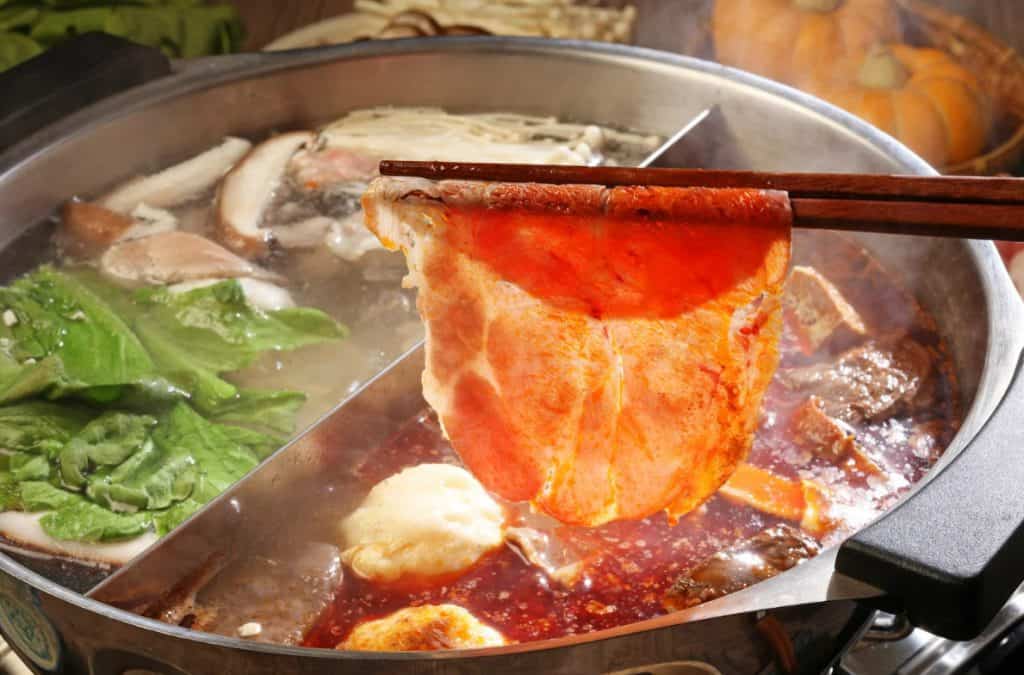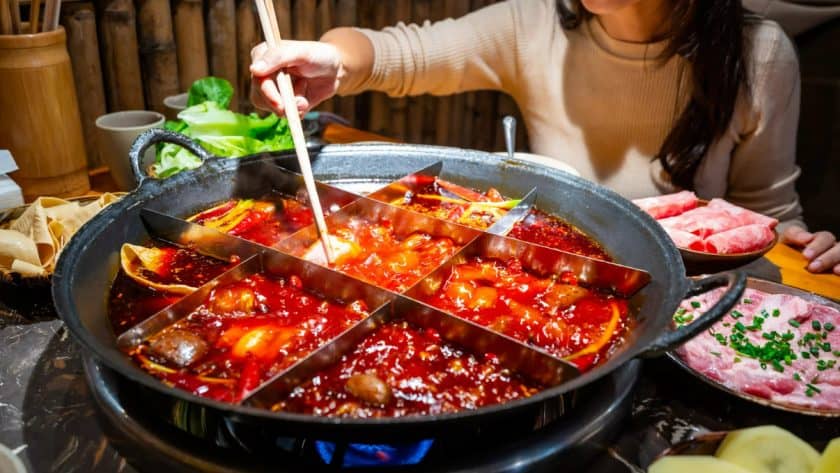There’s dinner that comes alive where the stage is actually the table, steam rising from bubbling pots, sizzling meat getting a burst of flame, and plates traveling down on a conveyor belt like offerings from the soy and rice gods. If anyone can turn a meal into an experience, it’s Asian dining.
Across Asia, food is rarely just a matter of sustenance. It’s social, it’s theatrical, it’s layered with technique and tradition and more often than not, it’s built for group dining. Whether you’re dunking lotus root into a numbing Sichuan broth, flipping marinated short ribs over a glowing charcoal grill, or catching a glimpse of your favourite nigiri whizzing past on a conveyor belt, these dining formats invite interaction and celebration.
So, if you’ve ever wondered why dinner at your local ramen spot feels totally different from an evening around a Korean BBQ table, let’s break down three iconic Asian formats that make every bite feel like a party.
1. Hot Pot: A Ritual of Steam, Spice, and Sharing
To the naive, hot pot may be a little perplexing. There is a simmering cauldron of broth in the center of the table, and a summit of raw material heaped about it: paper-thin slices of beef, curls of squid, puffs of tofu, greens, quail eggs, fish cakes, enoki mushrooms. And you, chopsticks poised, trying to remember what you dunked five minutes ago.
But that’s exactly the charm. Hot pot is not so much a meal—more a slow dance. A simmering chat. A communal ritual that beckons you to cook, share, taste, and do it again.
Regionally diverse, hot pot originated in China and is popular across Taiwan, Vietnam, and beyond. In Chengdu, it’s the burn: a unapologetically hot, oily Sichuan peppercorn-infused broth. In Japan, shabu-shabu is cleaner, lighter, with kombu broth and soft swishing. Thai sukiyaki adds pungent sauces and glass noodles.
No matter the form, hot pot is a great leveler. Everyone’s hands are full. Everyone’s eyes are on the pot. It’s democratic, delicious pandemonium—and nothing brings people together faster.

2. Korean BBQ: Grill, Flip, Wrap and more
Few dinner arrangements yell “party” more than Korean BBQ. It’s a simple concept: grill at the table, assortment of marinated meats (samgyeopsal, galbi, bulgogi), and so many side dishes (banchan) that you’ll find yourself scratching your head about what in the world you initially ordered.
But beneath the sizzle and smoke is a rhythm meal. There’s choreography. One individual is the default grill master. Another friend assembles the ssam (lettuce wraps), piling grilled meat with raw garlic, ssamjang, rice, and kimchi. Discussion ceases and resumes between bites. Cold beer and soju clink throughout the meal.
There’s history as well. Korean BBQ caught on after the war because outdoor grilling was a communal experience. It evolved indoors decade by decade to what we love in hip city restaurants throughout Seoul and in London, Manchester, and Birmingham, where Korean BBQ restaurants are nowadays destination venues for birthday parties, reunions, and end-of-workday receptions.
If hot pot is a relaxing simmer, K-BBQ is a hot-heat rush. And not surprisingly, most restaurants currently have group dining sets for dining with set platters and drinks to accompany them. It’s not so much about consumption, it’s about creating memories around flesh and fire.
3. Sushi Conveyor Belt: the Classic
Sushi is perhaps Japan’s most refined culinary export, but conveyor belt sushi, or kaitenzushi, is pure, unadulterated fun. And sure, it turns dinner into a celebration even if a relatively tame one compared to its smoky, sizzling cousins.
The arrangement is genius in its simplicity: small plates of sushi pass by on a motorised conveyor belt. You grab what you fancy. End of story. No hassle, no jumping waiters every five minutes. Just you, your appetite, and a never-ending stream of maki, nigiri, and the occasional bonus of tamago or uni.
Conveyor sushi was invented in post-war Osaka by restaurateur Yoshiaki Shiraishi, who wanted to serve more customers with fewer waiters. Decades later, it’s an institution of Japanese eating culture, especially for solitary diners, young couples, and families with hungry kids.
In Britain, conveyor belt restaurants are thriving again—refurbished with touch-screen ordering, electronic bill tracking, and even miniature trains to bring the hot dishes directly to your table. It’s dinner with a side of dopamine, and the thrill of seeing your food come isn’t ever really old.
For an easy-commitment, high-reward group meal—particularly with children or sushi novices—kaitenzushi is enjoyable, quick, and still surprisingly sophisticated.

Why These Table Settings Work So Well with Groups
Let’s be honest: not every night in town is about dinner. Sometimes it’s about hanging out. These formats work because they turn the meal into a shared experience.
They don’t sit still. They say cook, pick, dip and reach. They start a conversation. They urge pauses: moments to hang up your phone, laugh at someone’s chili face, or argue over which dipping sauce reigns supreme.
Restaurants catering to such formats understand this. Some now have special group dining spaces, pre-fixe for four or more, and even private grills or hot pot booths. And as we get progressively further away from three-course formality, this mode of eating seems natural, lively, and better in keeping with how people want to spend time together.
Final Thoughts
Asian dining styles such as hot pot, Korean BBQ, and conveyor sushi remind us that food is not just an experience, but that experience is about the presentation, the service, and the company.
Whether you’re planning a team dinner, a casual date night with a twist, or just want to eat way too much meat without judgment, these formats deliver on all fronts. They’re rooted in tradition, but always evolving—just like the cities they thrive in.
So next time someone says “let’s go out,” maybe skip the standard pub and opt for something a little more… interactive.
And don’t forget to book that group dining table before everyone else gets the chance.
